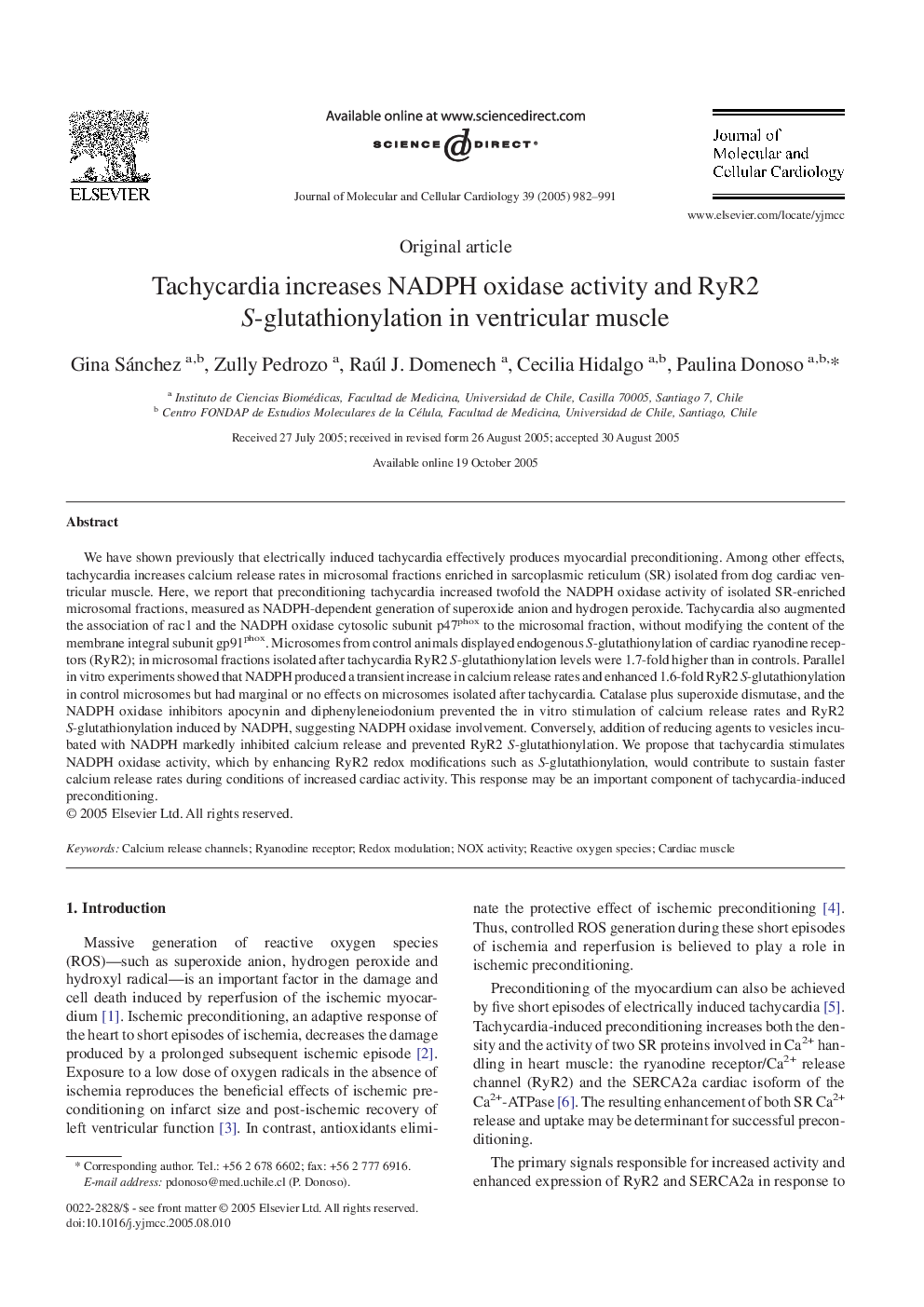| کد مقاله | کد نشریه | سال انتشار | مقاله انگلیسی | نسخه تمام متن |
|---|---|---|---|---|
| 10954305 | 1097892 | 2005 | 10 صفحه PDF | دانلود رایگان |
عنوان انگلیسی مقاله ISI
Tachycardia increases NADPH oxidase activity and RyR2 S-glutathionylation in ventricular muscle
دانلود مقاله + سفارش ترجمه
دانلود مقاله ISI انگلیسی
رایگان برای ایرانیان
کلمات کلیدی
موضوعات مرتبط
علوم زیستی و بیوفناوری
بیوشیمی، ژنتیک و زیست شناسی مولکولی
بیولوژی سلول
پیش نمایش صفحه اول مقاله

چکیده انگلیسی
We have shown previously that electrically induced tachycardia effectively produces myocardial preconditioning. Among other effects, tachycardia increases calcium release rates in microsomal fractions enriched in sarcoplasmic reticulum (SR) isolated from dog cardiac ventricular muscle. Here, we report that preconditioning tachycardia increased twofold the NADPH oxidase activity of isolated SR-enriched microsomal fractions, measured as NADPH-dependent generation of superoxide anion and hydrogen peroxide. Tachycardia also augmented the association of rac1 and the NADPH oxidase cytosolic subunit p47phox to the microsomal fraction, without modifying the content of the membrane integral subunit gp91phox. Microsomes from control animals displayed endogenous S-glutathionylation of cardiac ryanodine receptors (RyR2); in microsomal fractions isolated after tachycardia RyR2 S-glutathionylation levels were 1.7-fold higher than in controls. Parallel in vitro experiments showed that NADPH produced a transient increase in calcium release rates and enhanced 1.6-fold RyR2 S-glutathionylation in control microsomes but had marginal or no effects on microsomes isolated after tachycardia. Catalase plus superoxide dismutase, and the NADPH oxidase inhibitors apocynin and diphenyleneiodonium prevented the in vitro stimulation of calcium release rates and RyR2 S-glutathionylation induced by NADPH, suggesting NADPH oxidase involvement. Conversely, addition of reducing agents to vesicles incubated with NADPH markedly inhibited calcium release and prevented RyR2 S-glutathionylation. We propose that tachycardia stimulates NADPH oxidase activity, which by enhancing RyR2 redox modifications such as S-glutathionylation, would contribute to sustain faster calcium release rates during conditions of increased cardiac activity. This response may be an important component of tachycardia-induced preconditioning.
ناشر
Database: Elsevier - ScienceDirect (ساینس دایرکت)
Journal: Journal of Molecular and Cellular Cardiology - Volume 39, Issue 6, December 2005, Pages 982-991
Journal: Journal of Molecular and Cellular Cardiology - Volume 39, Issue 6, December 2005, Pages 982-991
نویسندگان
Gina Sánchez, Zully Pedrozo, Raúl J. Domenech, Cecilia Hidalgo, Paulina Donoso,